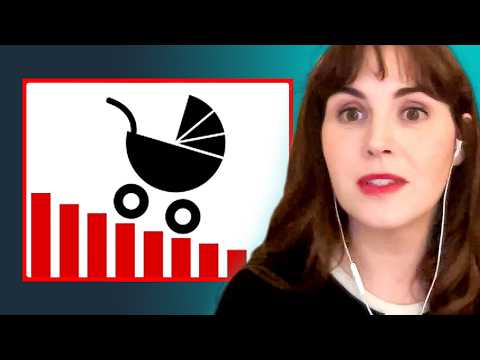Late marriage and delayed childbearing, driven by economic challenges and changing social dynamics, are contributing to declining fertility rates in the West
Questions to inspire discussion
Marriage and Family Planning
🤵👰 Q: How can young adults increase their chances of finding a suitable partner for marriage?
A: Prioritize marriage-oriented activities in your 20s, seek partners with similar values and life goals, and consider traditional courtship practices that emphasize long-term compatibility over short-term attraction.
👨👩👧👦 Q: What are the benefits of marrying younger (20-35) compared to later in life?
A: Marrying between 20-35 years old is associated with lower divorce rates, as couples can form their lives together, develop shared preferences, and have more time for family planning during peak reproductive years.
Career and Education
📚💼 Q: How can high-achieving women balance career aspirations with family planning?
A: Consider freezing eggs for future family planning, actively seek potential partners while pursuing education/career goals, and be open to dating men with different educational backgrounds or career paths.
Societal Trends
🔍📊 Q: What can be done to address the issue of men in their 20s struggling to signal their suitability as partners?
A: Encourage the revival of traditional markers of reliability and success, such as military service, entrepreneurship, or vocational skills, and promote these as valuable traits in potential partners.
Relationship Dynamics
⏳👫 Q: How can couples navigate increasing age gaps in relationships?
A: Communicate openly about life goals and timelines, be aware of potential power imbalances, and ensure both partners are on the same page regarding family planning and career aspirations.
Personal Development
🎓💪 Q: What personal qualities should young adults focus on developing to become more attractive marriage partners?
A: Cultivate financial stability, emotional intelligence, communication skills, and a clear vision for the future, as these qualities signal readiness for long-term commitment and family life.
Key Insights
Delayed Marriage and Fertility
- 🕰️ Late marriage (typically over 30) significantly reduces the likelihood of having 2.5 kids by delaying reproductive lives and shortening the fertility window.
- 👰 The average age of first marriage has increased from 22 during the baby boom to over 30 today, with people skipping their 20s for coupling.
Changing Male Signaling
- 🚹 Men in their 20s struggle to signal their suitability as husbands through traditional means like military service, running businesses, or attending elite universities.
Social Perception and Expectations
- 📱 Lifestyle inflation expectations online create an intergenerational competition theory, despite Gen Z being economically better off than previous generations.
Partner Selection
- 👩❤️👨 According to GSS survey, women's primary reason for not having children is not finding the right partner, rather than career or housing concerns.
Female Hypergamy
- 🔝 High-performing women's desire for partners who are better than them contributes to delayed marriage and childbearing, as finding suitable matches becomes harder with age.
#Psychology #Sociology #Relationships
XMentions: @chriswillx @LouisePerry
Clips
-
00:00 💔 Late marriage is the primary reason for declining fertility rates in the West, as couples tend to have children once they are married.
-
01:01 👶 People are postponing marriage and childbearing, leading to declining birth rates, as women prioritize finding reliable partners who can provide support.
- People are delaying marriage and childbearing until later in life, often skipping their 20s, which contributes to declining birth rates.
- The decline in childbirth rates is primarily due to delayed marriage, as men in their 20s struggle to demonstrate their reliability as future husbands, which women seek for support during child-rearing.
- Women seek reliable partners who can provide support and resources during challenging times, often looking for indicators of capability such as wealth or education.
-
03:51 👶 The decline in birth rates is driven by young men's struggles with financial stability and women's rising success, leading to doubts about partnership readiness.
- The decline in birth rates is partly due to young men facing challenges in demonstrating their reliability and financial stability, as factors like higher education and property costs extend their adolescence.
- Men's opportunities to demonstrate readiness for fatherhood and marriage have diminished, contributing to declining birth rates.
- Women are achieving greater educational and socioeconomic success, leading to skepticism about their partners' ability to provide equal support, which contributes to declining birth rates.
-
06:36 🌍 Social media fosters unrealistic life expectations, leading younger generations to feel economically unprepared despite being better off than previous ones.
-
07:35 👶 Women are opting out of motherhood due to difficulty finding financially stable, mature partners.
- Women are increasingly choosing not to have children primarily because they struggle to find suitable partners who meet their expectations, particularly in terms of financial stability.
- Many singles find that the women they date lack maturity, emotional depth, and commitment readiness.
-
09:15 👩🎓 Women are prioritizing dating older, more successful men, which delays family planning as career-focused women struggle to find suitable partners.
- Women are increasingly dating older men, reflecting a shift in priorities where finding a partner during university is emphasized over career success.
- Women with career success may struggle to find partners who meet their expectations, leading to delays in starting families.
- High-performing women increasingly seek hypergamous partners as they advance socioeconomically, desiring mates who are even more successful than themselves.
-
11:47 💔 Finding a spouse later in life is tough due to established preferences, while marrying between 20 and 35 promotes joint growth and lowers divorce rates.
- Finding a spouse later in life is challenging because individuals have already established their preferences and lifestyles, making it difficult to find a perfect match.
- Getting married between ages 20 and 35 fosters joint life development, reducing divorce likelihood.
- 13:30 🥤 Element is a delicious electrolyte drink mix that enhances hydration, reduces muscle cramps, and supports brain health without any artificial ingredients.
-------------------------------------
0:14:51 2025-03-31T09:59:19Z
https://www.youtube.com/watch?v=10A8lh8XZ90
-------------------------------------

